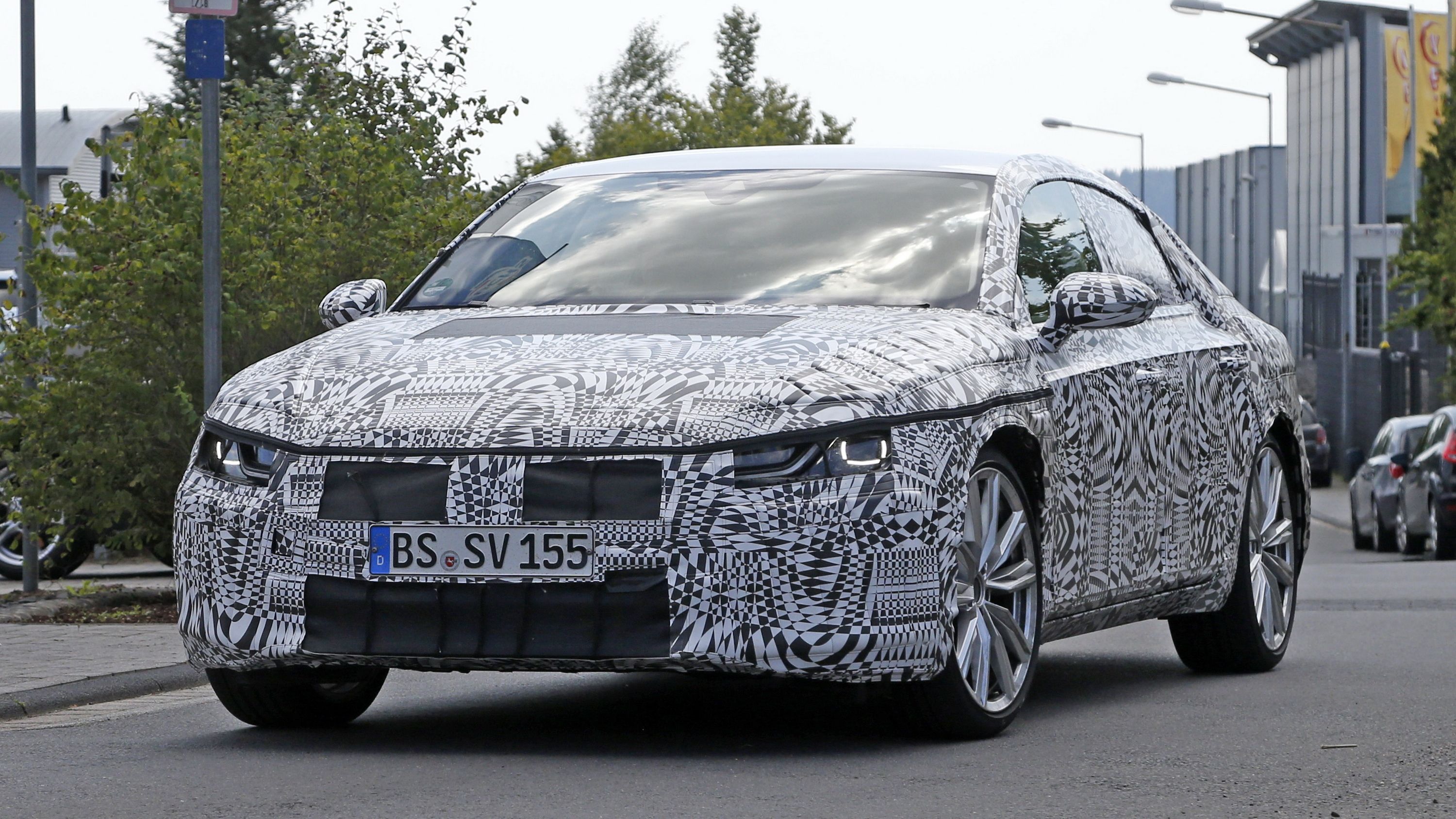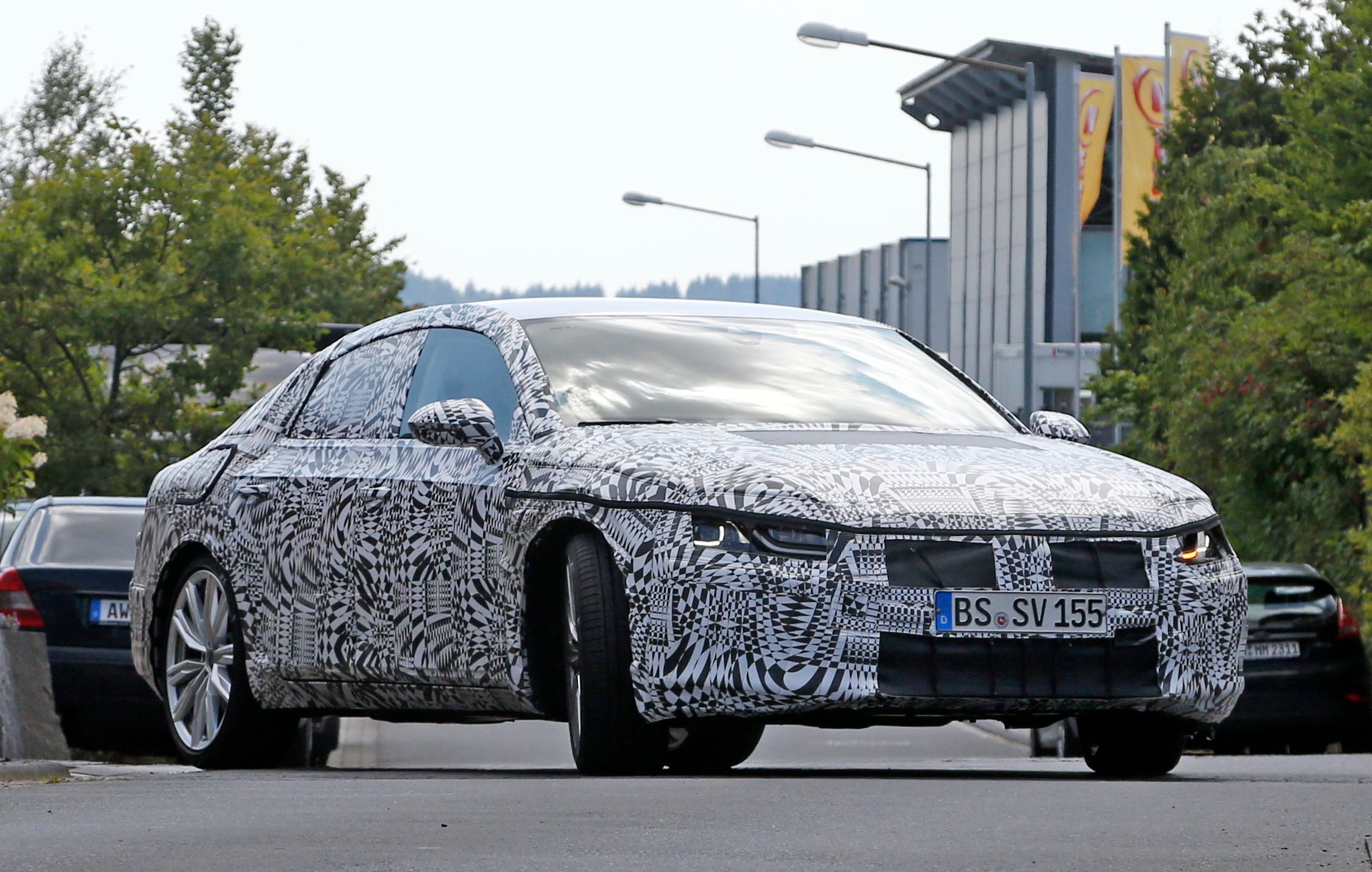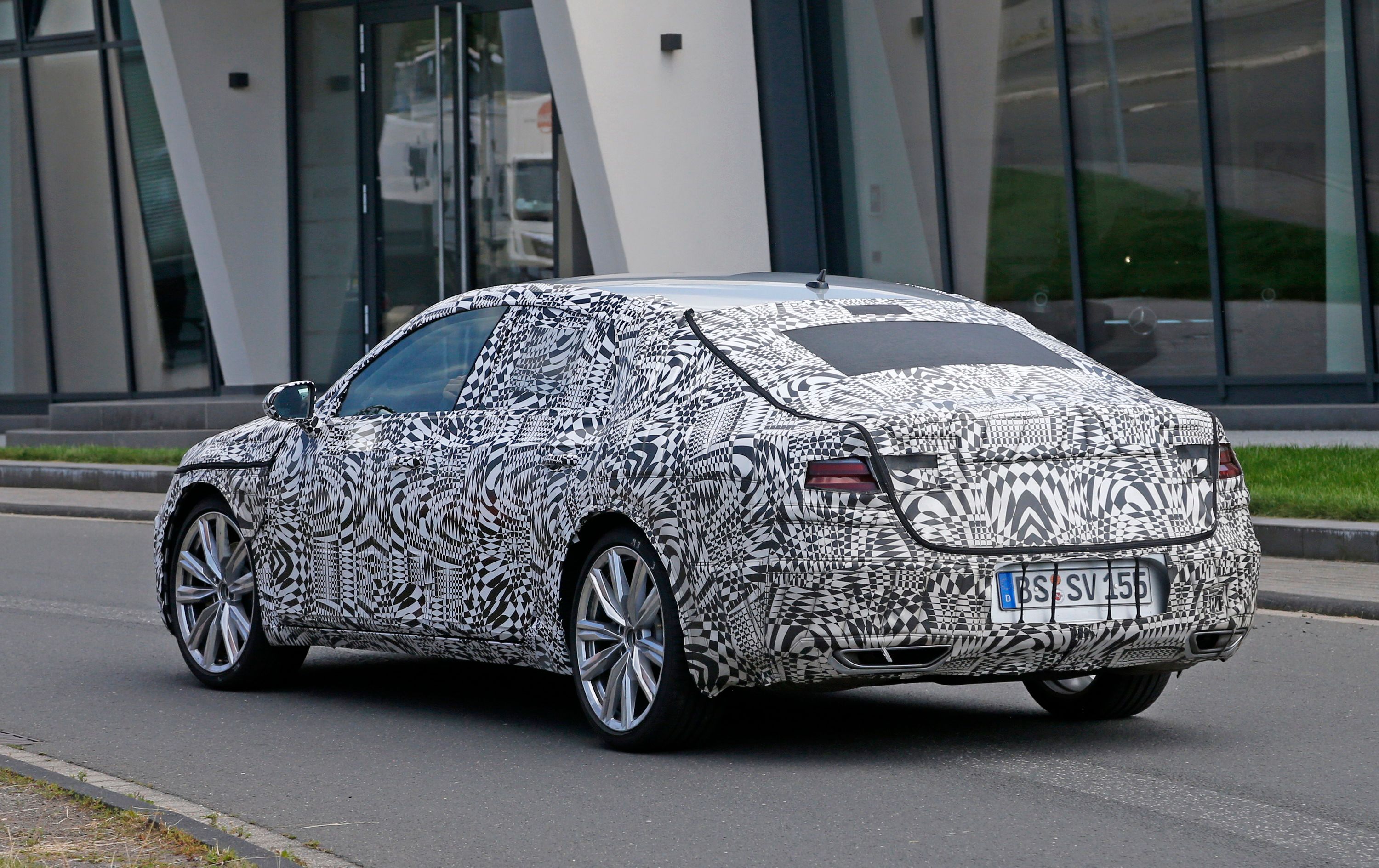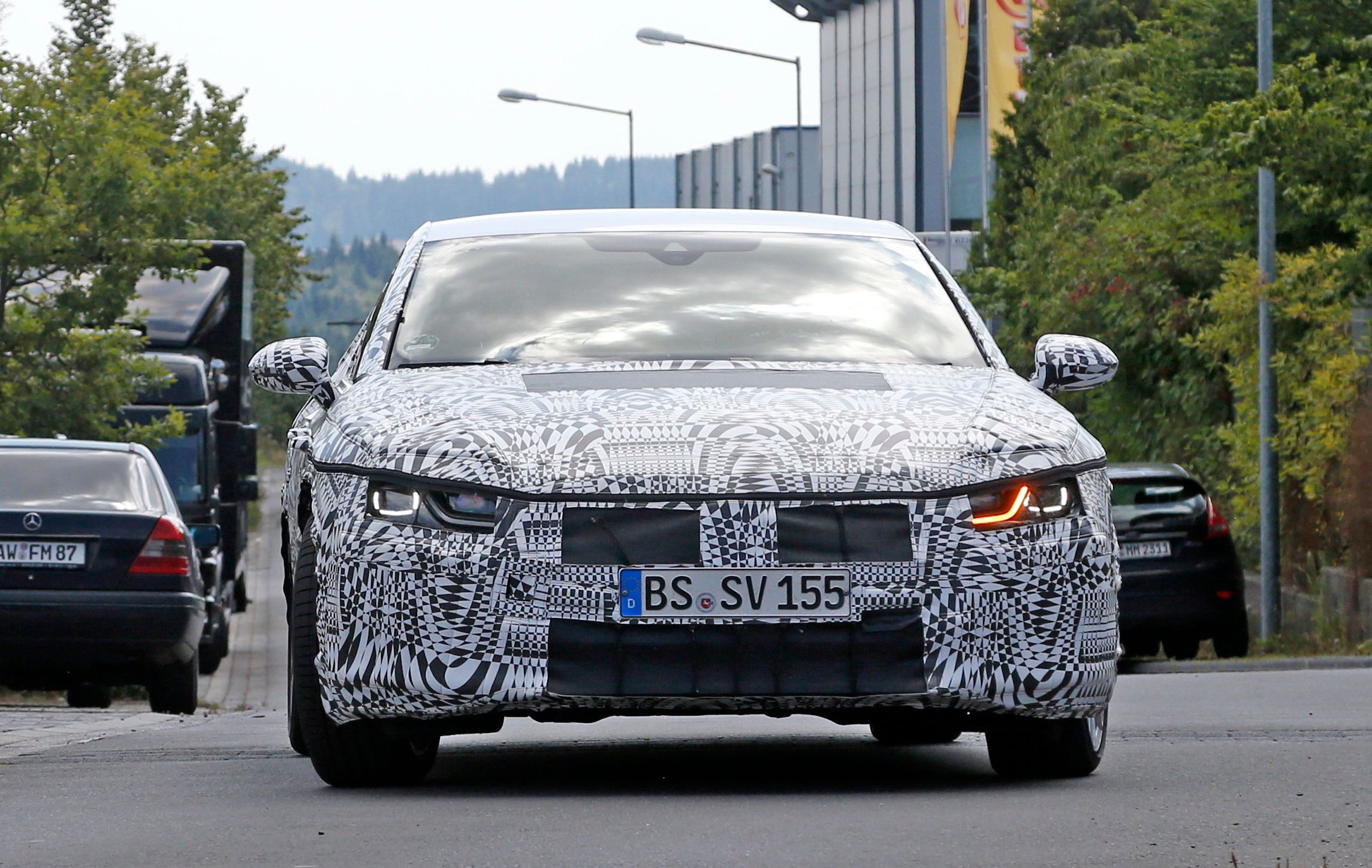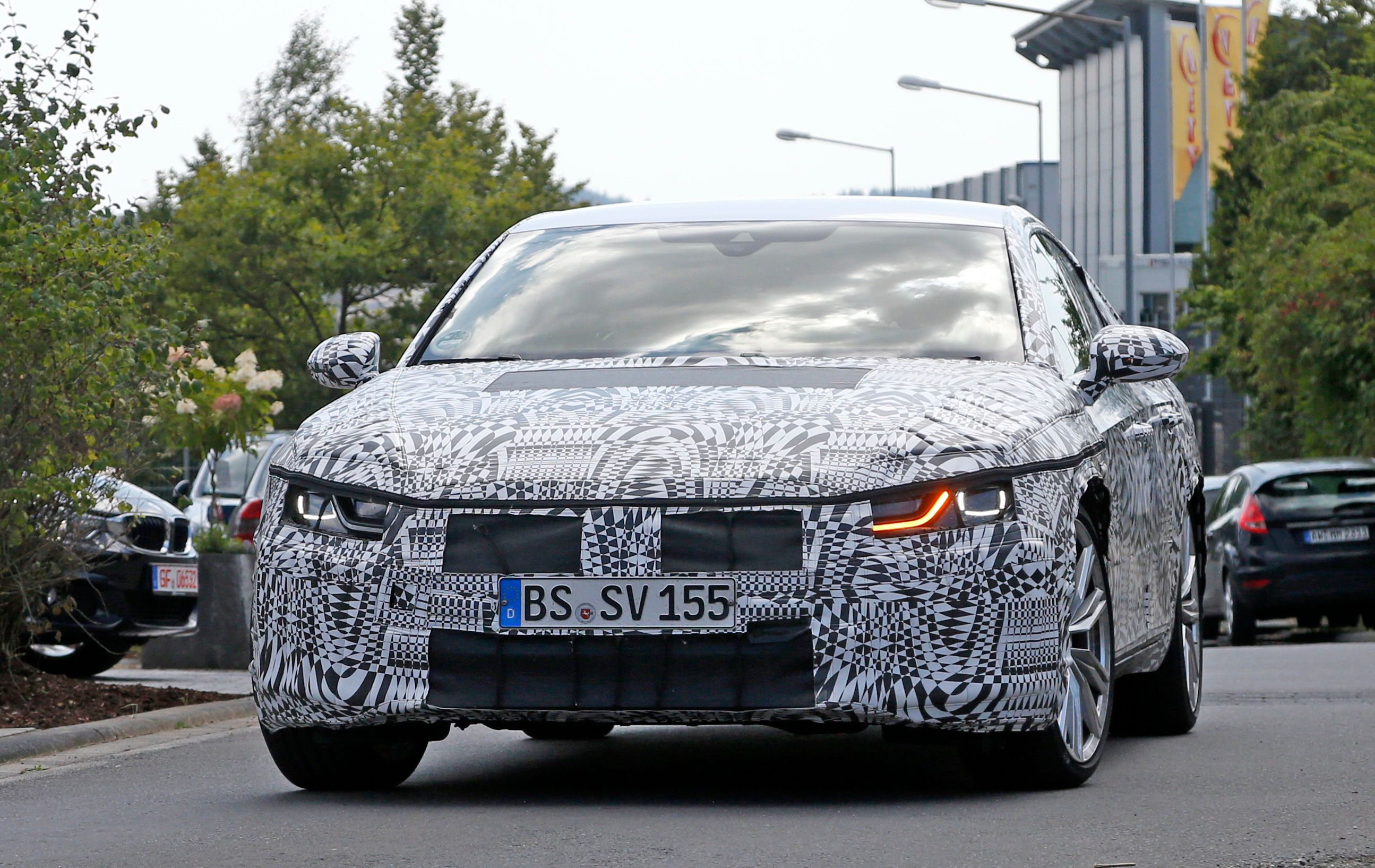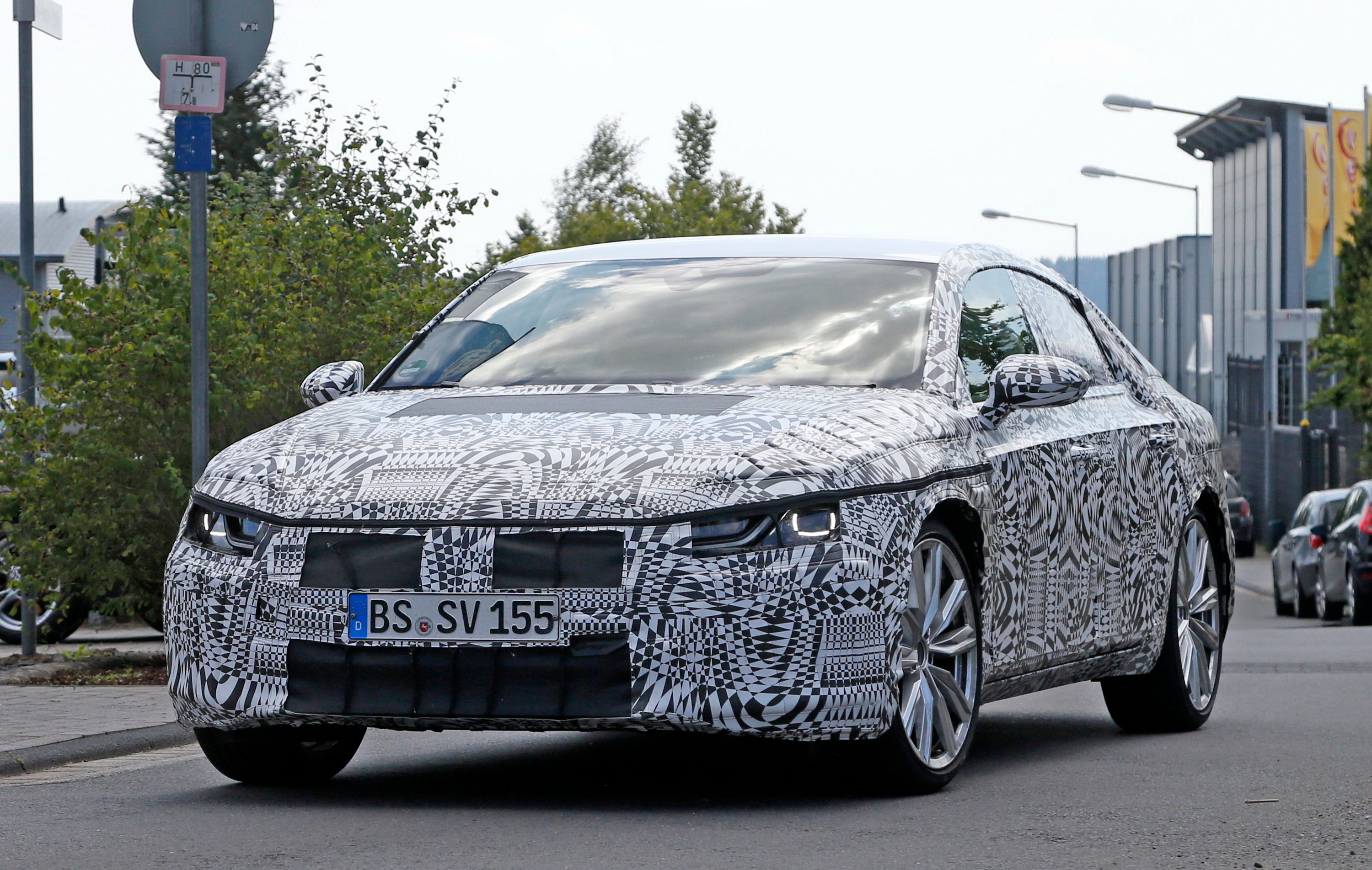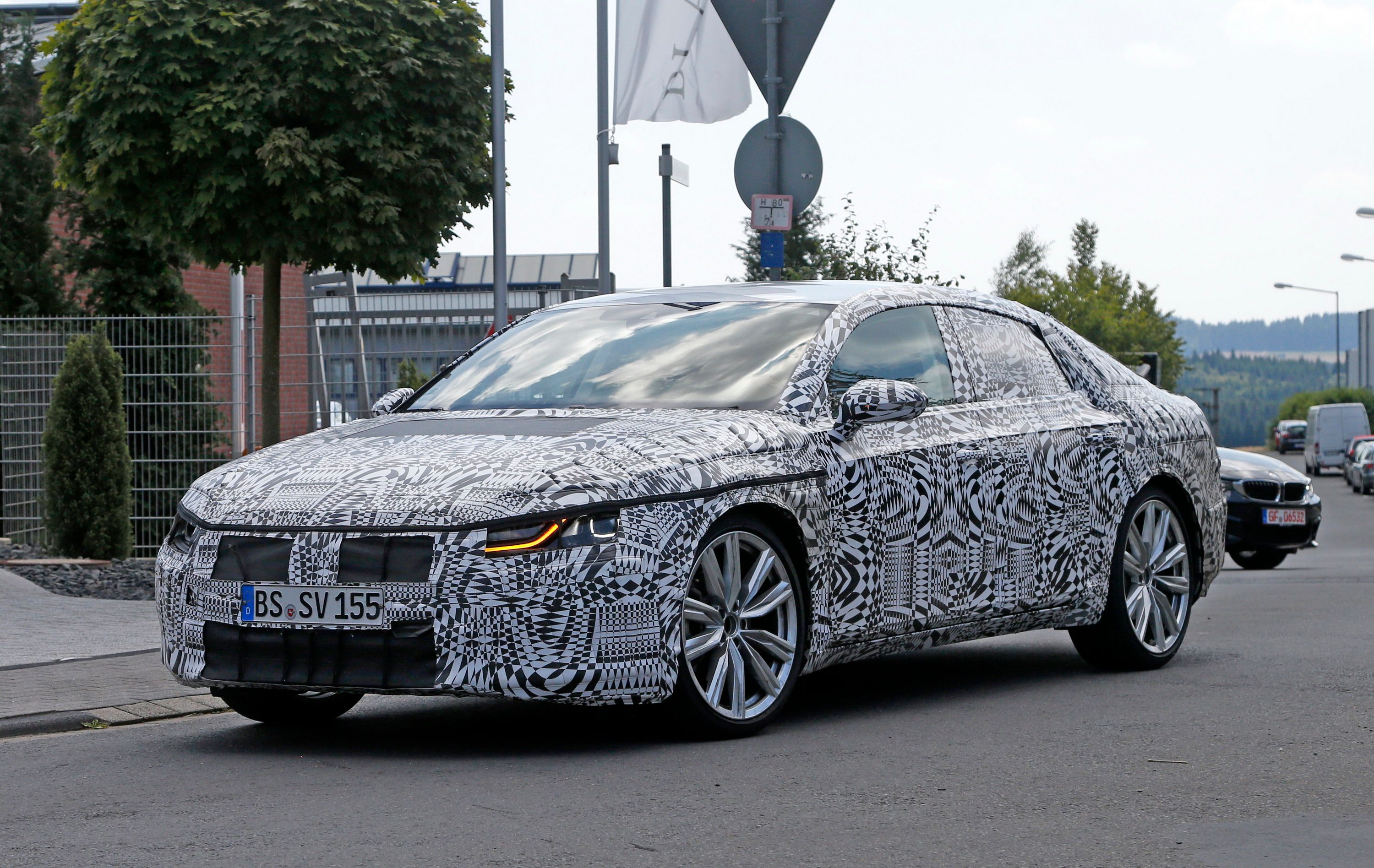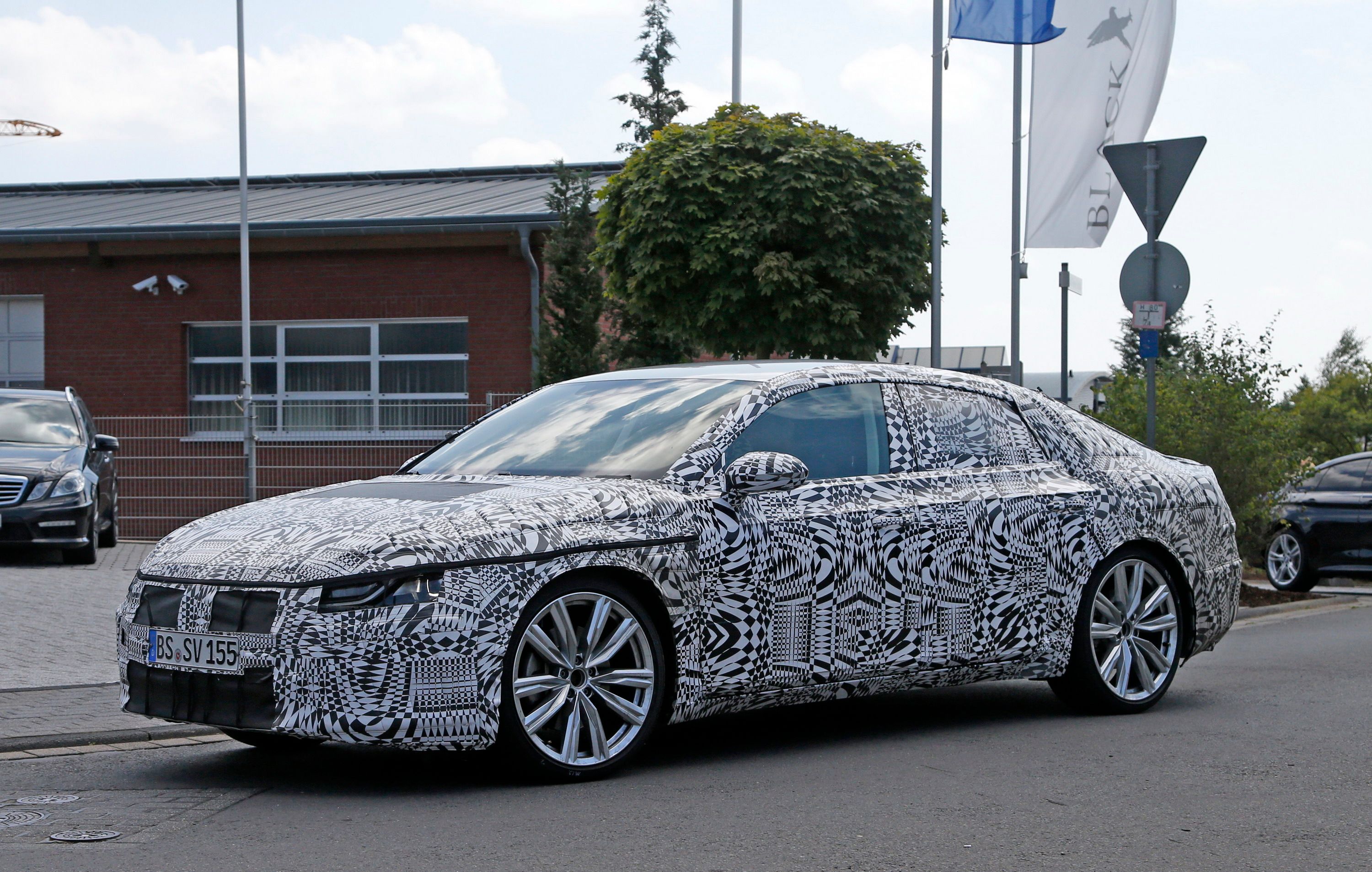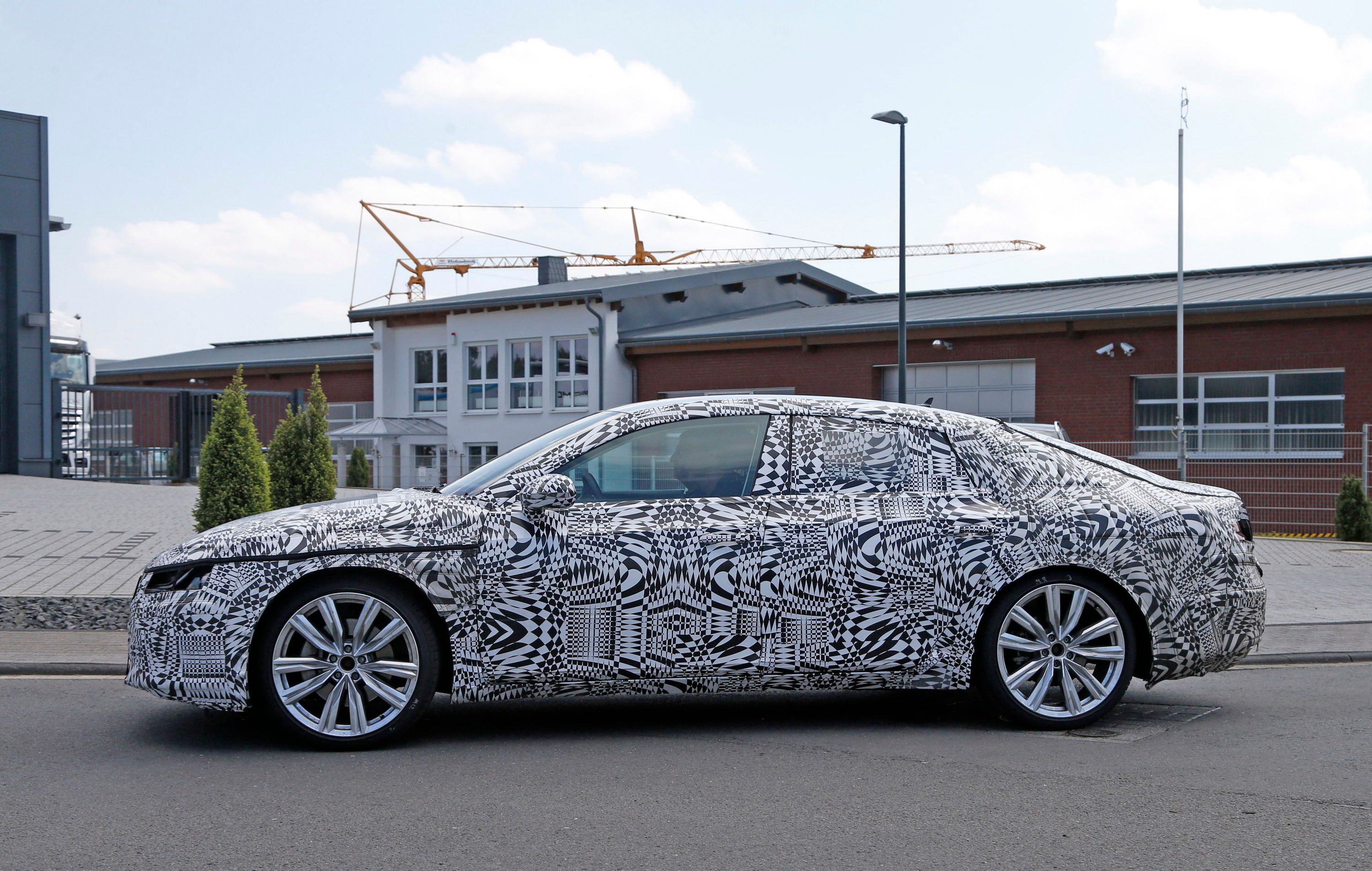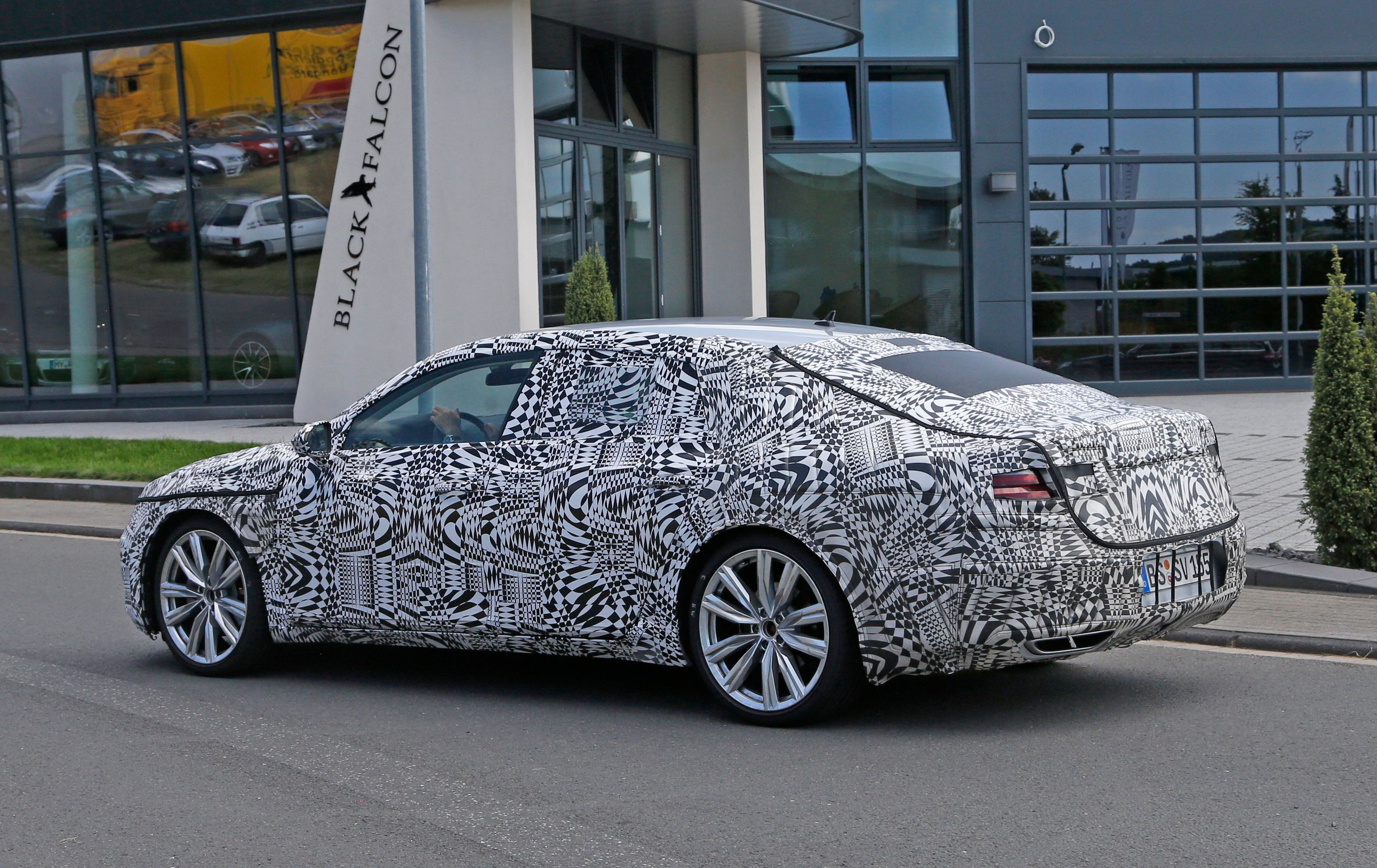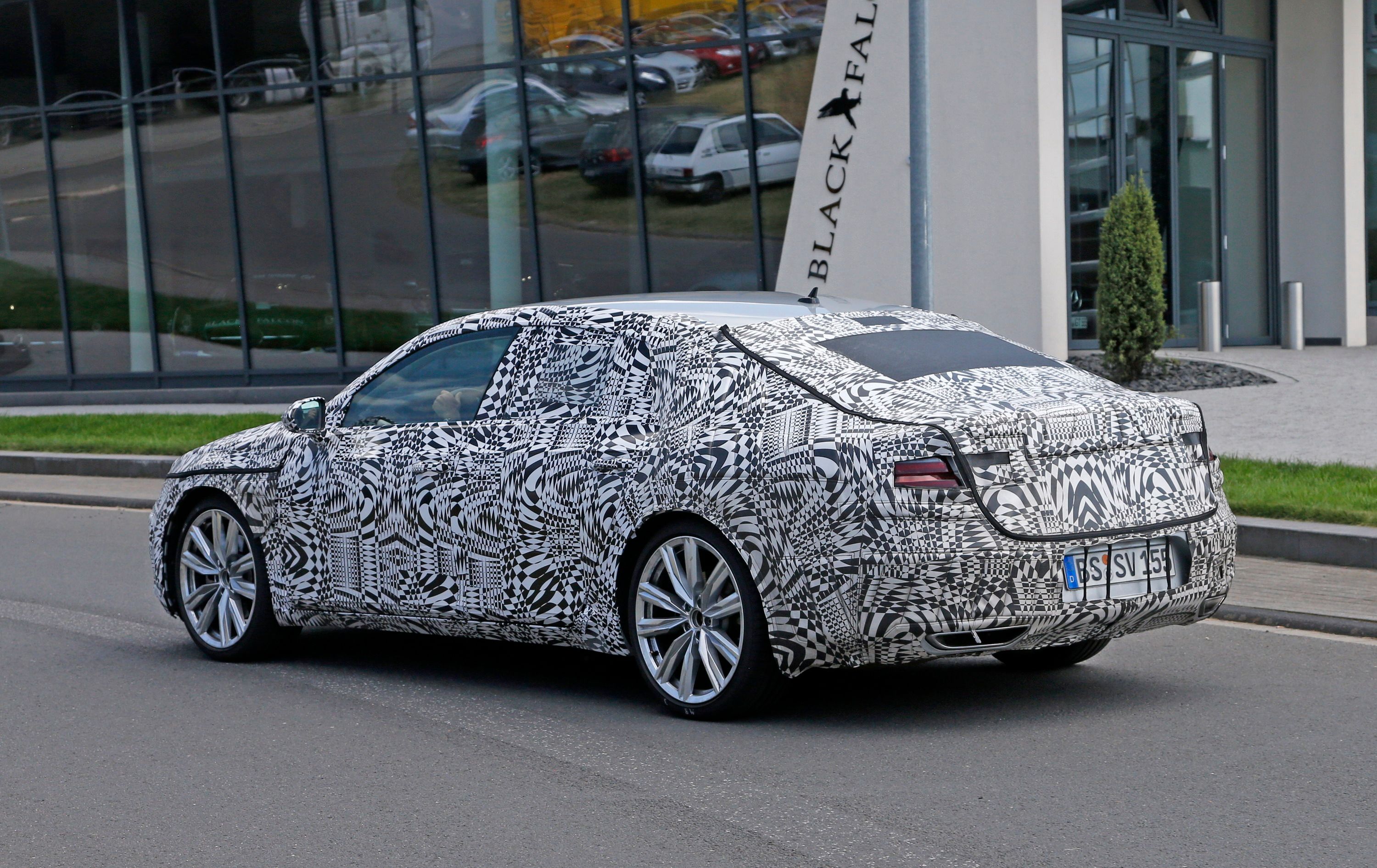The Volkswagen CC made its debut at the 2008 Detroit Auto Show as the Passat CC. The only big different between the CC and the Passat was the CC’s sweeping roofline that gave it a sleeker appearance at the sacrifice of head and cargo room inside. From the start, the car was offered with a full range of engines that included a 1.8-liter four-cylinder, a 2.0-liter four-cylinder, a 2.0-liter diesel, and a 3.6-liter V-6. It went through a facelift in 2011 that brought about a 1.4-liter gasoline mill into the mix and an upgrade of eight horsepower to the 2.0-liter gasoline unit. As part of the facelift, Volkswagen restyled the front and rear of the car but left it unchanged otherwise.
It’s been more than four years since the facelifted CC started production and it’s overdue for a generational shift if it VW wants to stay competitive in the market. We’ve been wondering when we were going to see the next-gen model testing in the wild and today, our wonders were put to rest with a decent run of spy shots that were taken just outside the Audi/VW test facility at the infamous Nürburgring. Unfortunately, it’s sporting a lot of camouflage and padding, but we can still see that VW has put some serious effort its redesign.
So, let’s quit wasting time and dive on into these spy shots and talk a little bit about the second-gen Volkswagen CC.
Continue reading to learn more about the upcoming Volkswagen CC.
2018 Volkswagen CC
- Make: Array
- Model: 2018 Volkswagen CC
- [do not use] Vehicle Model: Array
Spy Shots
August 17, 2016 - First testing session
Exterior
The guys responsible for covering up this prototype did a pretty good job padding and hiding anything that would give us any solid idea of what’s hidden beneath. The first thing I noticed is the shape of the hood. There’s a lot of padding on the outside edges, which tells me there were changes made to the sharp body lines on the hood of the current model. These have likely been toned down a bit to get rid of that awkward look of height. Furthermore, the hood looks to fold over at the nose, giving it an almost vertical tip. The headlight units are all new and look to be much smaller than those on the current model. They also look to sport at least two different LED strips that will help to give the front end more character. The radiator grille looks like it won’t be quite as tall as before and may not be as wide either. The lower air dam and corner vents are still a complete mystery at this point, but it looks like they may sweep upward on the outside corners.
Moving over to the sides, we see new mirror units that sit more upright than on the current model. The sweeping roof line looks to be about the same, but there is a lot of padding back there that could be throwing us off at this point. It looks like VW has gotten rid of that weird body line that ran from the front wheel arch to the rear quarter in place of a new body line that is a bit higher and runs from the headlights to the taillights. The lower edges of the body look to be about the same, but expect to see some kind of body cladding here on the production model.
To the rear, we can make out a body line that runs the full width of the rear fascia. This is likely the same chrome cladding from the current model, however it looks a bit thinner under all the camo here. The rear deck lid and rear glass both have a huge blanket of padding across them. The way it is set up, it looks like the new model may have the rear decklid and rear glass integrated into a hatch, but this could just be done to throw us off, and I certainly wouldn’t expect to see this model become a hatchback.
The tail lights are heavily covered, but look to take on about the same shape as that of the current model. The biggest change back here are those exhaust outlets. On the current model, you have your basic circular exhaust pipes, but this model is sporting dual rectangular units on each side that are integrated into the rear fascia – very nice. All told, the car is set up to be more aggressive and sportier than the current model, a much-needed change of style for this mid-range sedan.
Interior
As is the usual case with spy shots, we don’t have the luxury of checking out the interior just yet. This is the one department where the CC really fell short of my expectations, however, so expect there to be some more positive changes on the inside. It should get a redesigned steering wheel, instrument cluster, and seats. The TFT display in the instrument cluster should be a bit larger than on the current model, and expect there to be a larger infotainment system display in the center stack. The lackluster design of the dashboard will hopefully be replaced my something much cleaner and more pleasurable to look at. I expect to see the center console drop in height a little bit and come to a sharper angle where it meets the center stack.
Drivetrain
This is where things get a little interesting. The current CC is offered here in the U.S. with a 2.0-liter four-cylinder that delivers 200 horsepower or a 3.6-liter V-6 that delivers 280 horsepower. The new CC, however, should use the same platform as the Passat which is offered with 1.8-liter that delivers 170 horsepower or the same 3.6-liter with 280 ponies. Expect to see a similar offering when this model debuts in production form, but expect each one to offer just a little extra power to help give the new CC a little more edge over the current model. Power will be routed to the front wheels, with shifting duties handled by a six-speed DSG automatic. Some models my get Tiptronic and sport mode as optional equipment.
Pricing
At the time of this writing, the current CC starts out at $31,570 for the CC 2.0T. Moving up to the CC R-Line 2.0T comes with a starting price of $34,655 while the CC V6 starts out at $44,355. As for the next-gen model, it’s kind of hard to say where pricing will start out right now, but expect to see a mild increase in price. An extra $1,000 across the board isn’t necessarily out of the question, but I have a feeling pricing will only increase by a few hundred across the range. Stay tuned for updates on this front.
Competition
Acura TLX
When it comes to mid-range luxury sedans, the Acura TLX is a prime contender. For the 2017 model year, it comes standard with a 2.4-liter four-cylinder that delivers 206 horsepower to the front wheels via an eight-speed, dual clutch transmission. There is also a 3.5-liter option available that offers 290 horsepower through a nine-speed automatic at a premium of $3,450. It comes standard with Acura’s Precision All-Wheel Steering and can be optioned with Super Handling All-Wheel Drive for an extra $2,200. As of August of 2016, the 2017 Acura TLX starts out at $31,900 – just $330 more than the current Volkswagen CC.
Read our full review on the Acura TLX here.
Nissan Maxima
The Nissan Maxima is another strong contender in this niche, but unlike the offerings from Volkswagen and Acura, the Maxima is only offered with a V-6. Clocking in at 3.5-liters, this V-6 displaces 214 cubic-inches and delivers a cool 300 horsepower and 261 pound-feet of torque. Power is routed to the front wheels via a CVT transmission and there is no option for all-wheel drive as of August of 2016. The Maxima is currently offered in 6 different flavors with the entry-level S trim starting out at $32,560, the SV trim starting out at $34,540, the SL starting out at $37,040, the SR starting out at $37,820, the SR Midnight starting at $39,015, and the range-topping Platinum model starting out at $39,990.
Read our full review on the Nissan Maxima here.
Conclusion
To be honest, it’s about time that we’re finally seeing VW putting in some work on the second-gen CC. The update to the first-gen model in 2011 did bring a bit of freshness to the model, but it wasn’t nearly enough to keep it soldiering on into 2016. At this point, the current model is heavily dated and not quite up to par compared to other competitors in its niche. The way it stands now, you can get much nicer features from competing models, like the Acura TLX, for example, for right around the same price. I expect to see VW pull the sheet off of its new CC sometime soon to help usher in a strong 2017 as it tries to recover from the cloud of negativity that hangs over its name. Will this second-gen model hold up to the competition? Well, I can’t say for sure. But, if it comes out of the gate with lots of updated technology and a completely fresh look, VW could have a real winner on its hands. For now, all we can do is wait.

